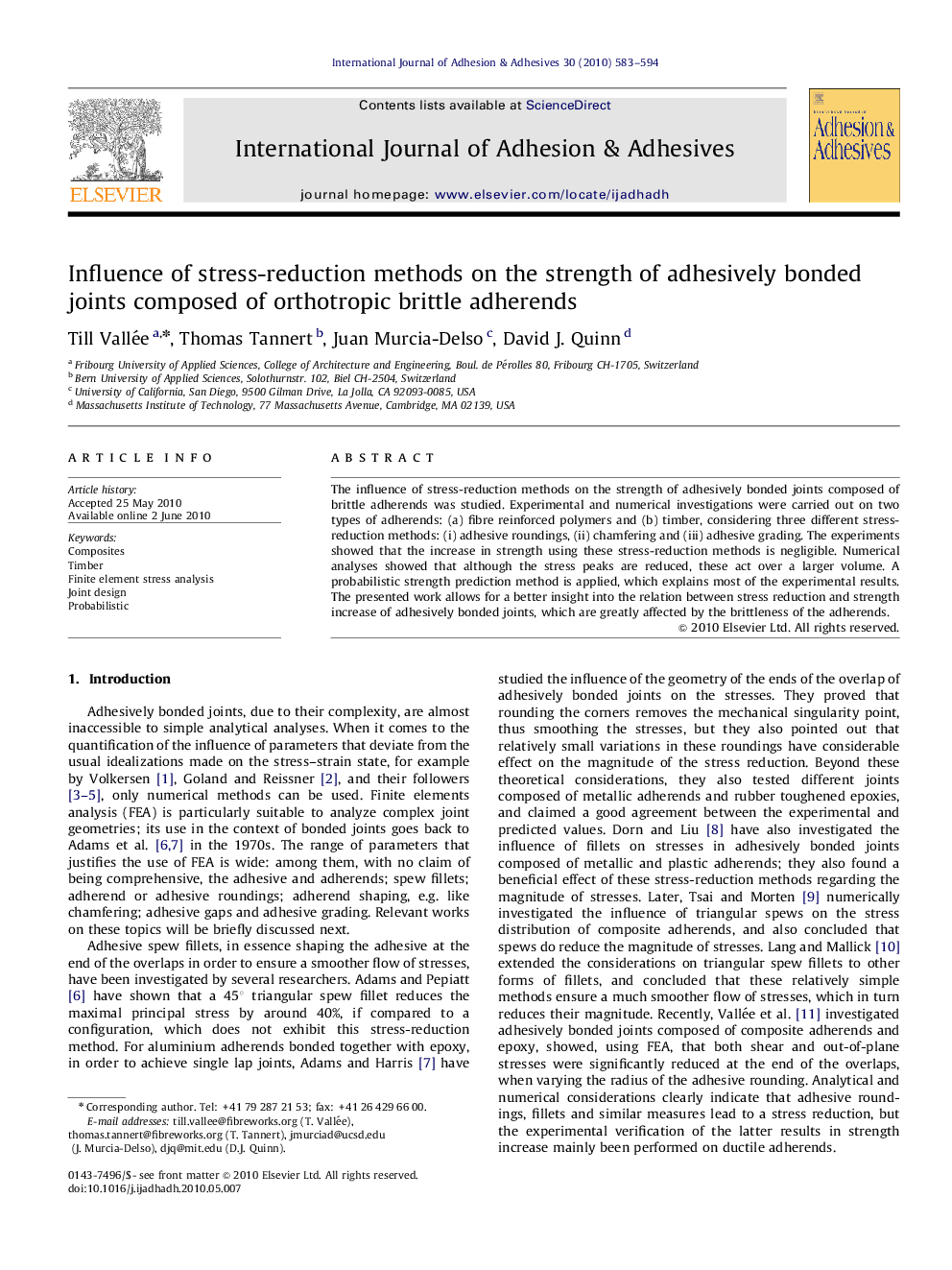| Article ID | Journal | Published Year | Pages | File Type |
|---|---|---|---|---|
| 777189 | International Journal of Adhesion and Adhesives | 2010 | 12 Pages |
The influence of stress-reduction methods on the strength of adhesively bonded joints composed of brittle adherends was studied. Experimental and numerical investigations were carried out on two types of adherends: (a) fibre reinforced polymers and (b) timber, considering three different stress-reduction methods: (i) adhesive roundings, (ii) chamfering and (iii) adhesive grading. The experiments showed that the increase in strength using these stress-reduction methods is negligible. Numerical analyses showed that although the stress peaks are reduced, these act over a larger volume. A probabilistic strength prediction method is applied, which explains most of the experimental results. The presented work allows for a better insight into the relation between stress reduction and strength increase of adhesively bonded joints, which are greatly affected by the brittleness of the adherends.
